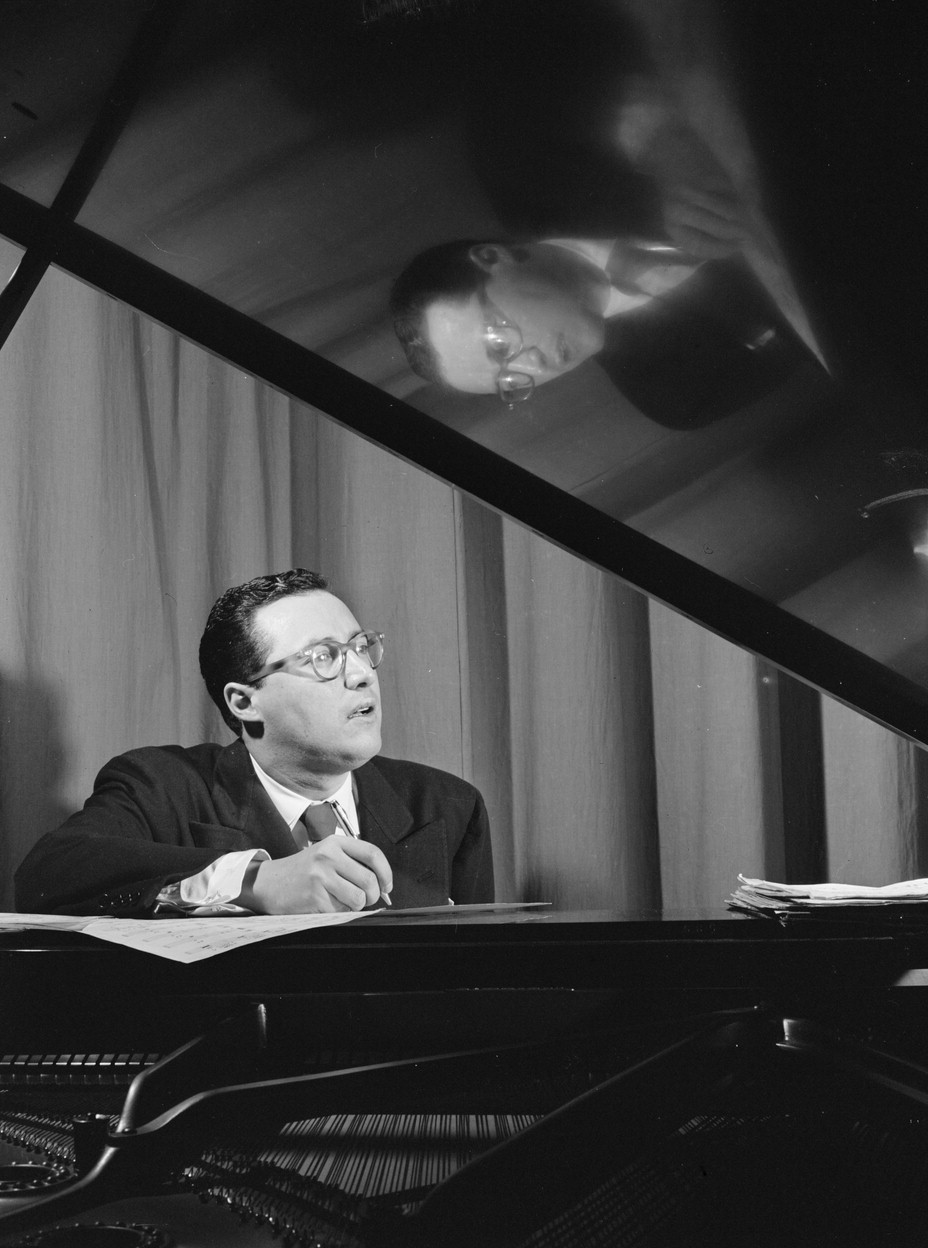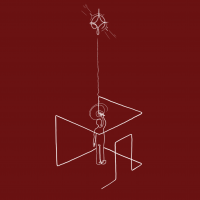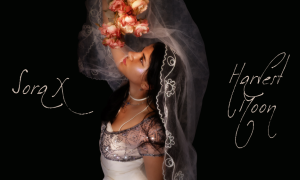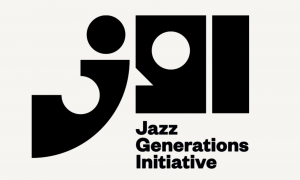
Starting in 1944 with his first arrangement for Kenton (Opus a Dollar Three Eighty), Rugolo's music was as sweeping and as grand as California's panoramic landscape—and at times just as entangled and commercial, earning him both fans and detractors.
Unlike fellow prolific band arrangers Neal Hefti and Ralph Burns, Rugolo's sound was rooted in a deep love for brass andmule-kicking delivery. With Kenton, Rugolo never had to fuss or mince notes. His compositions and arrangements for the bandleader always fully grasped West Coast musicians' desire to unleash egos and high notes. In most of Rugolo's works, you can hear Southern California's sudden economic rise and the yen of young residents for speed, optimism and conformity following World War II. [Photo of Stan Kenton and Pete Rugolo being interviewed by an unknown radio host in the late 1940s by William P. Gottlieb]
Some musicians who played Rugolo's charts as well as some jazzlisteners found his scores excessively knotted and unnecessarily burdened with modern classical themes and faux-dramatic motifs. The knock was that his writing could feel overly dense and cerebral, sacrificing swing on the alter of Euro-modernism.
But ultimately, such criticism rarely lingered, since Rugolocould do it all. His sheer output alone as an arranger exhibited a wide range of styles, often giving all sections of an orchestra a chance to shout and shine. As a result of Rugolo's writing, the musical bar in Los Angeles was constantly rising, requiring better and better sight-readers in order to record his material with precision the first time around.
Like many West Coast arrangers in the late '40s and early '50s, Rugolo kept workaholic's hours, turning out arrangement after arrangement and album after album without ever succumbing to novelty popor sticky sentimentality. Perhaps the best expression of this approach at the dusk of the 78-rpm era was his arrangement of Orange Colored Sky in August 1950 for Stan Kenton. On the recording, the sedutive Nat King Cole meets a freeway of brass traffic. The point was to whimsically contrast staid pop and the collective daring of Kenton's top instrumentalists.
Rugolo instictively understood the excitement of the trumpet and trombone, arranging entire horn sections to spark and sustainunrestrained excitement in listeners. His arrangements of Can't We Talk It Over and Godchild (both 1956) are prime examples. With his charts, music was no longer about dances or concerts. The whole point was to blow away the at-home record-listener with engine-like power and hi-fi hipness. [Pictured: Stan Kenton and Pete Rugolo]
As a producer for Capitol in the late '40s, Rugolo had a hand in some of themost dynamic and important recordings of 1949. Dispatched to New York by the pop label to start a jazz line, Rugolo heard the intrinsic value of two ecentric artists. In January 1949, he produced what would become known as Miles Davis' Birth of the Cool singles. Two months later, he produced the Lennie Tristano Sextet with Lee Konitz and Warne Marsh recording Wow!, Cross Current, Intutition, Digresssion and others.
The importance of both sessions cannot be underestimated,nor can Rugolo's courage in recording them. The Birth of the Cool singles launched a new, compact orchestral sound that relied on the collective lightness and harmonies of the whole rather than star soloists. The Tristano session turned bebop inside out, relying on high-speed unison lines that employed modal scales rather than traditional structure and ushered in free jazz.
Rugolo knew from the outset that neither session would result in much revenue for Capitol. But for Rugolo, that wasn't the point. The music was vital precisely because it broke free of previous jazz models and convention, and pioneered radical new creative territory.
With the arrival of the LP in the late '40s and its adoption by allrecord companies by the early '50s, the demand for Rugolo's pen grew at Capitol Records. There, his arrangements could be found extensively on albums by June Christy and the Four Freshmen, who in 1955 recorded You Made Me Love You, furtively working in Rugolo's full name just before the instrumental break. [Photo of Pete Rugolo, with bat, and singer June Christy by William P. Gottlieb]
Throughout the decade, Rugolo also experimented with his own music and orchestras, sometime with success and atother times not so much. With the advent of rock and roll in the late '50s and '60s, Rugolo increasingly found himself writing for television and then the movies. Following Johnny Mandel's groundbreaking jazz score for the film I Want to Live, a growing number of TV shows and movies sought a brassy, sassy sound that Rugolo had perfected. As Creed Taylor noted when we spoke briefly yesterday, “Pete dominated and perfected that space."
Ultimately, Rugolo must be viewed through the times in whichhe composed and arranged. In his music, you hear for a brief 10-year a period a moment when the West Coast jazz musician was king. The best of those musicians worked seven days a week, 18 hours a day. They were well compensated. They raised families in large, comfortable homes in the suburbs. And they dominated the West Coast music scene—on records, in movies and in clubs. In Pete Rugolo's world, there were no sidemen or soloists, just large orchestras crammed together to produce visions of tomorrow.
JazzWax tracks: Here's my list of favorite Pete Rugolo albums from the '50s:
- June Christy—Something Cool (1953)
- Introducing Pete Rugolo and His Orchestra (1954)
- Rugolomania (1954)
- Four Freshmen and Five Trombones (1955)
- Kenton in Hi-Fi (1956)
- Reeds in Hi-Fi (1956)
- Brass in Hi-Fi (1956)
- Music for Hi-Fi Bugs (1956)
- June Christy—Gone for the Day (1957)
- Buddy Collette—Four Swinging Shepherds (1958)
- Buddy Collette—At the Cinema (1959)
- Music From Richard Diamond (1959)
JazzWax tracks: Here's June Christy singing Rugolo's arrangement of Something Cool (original mono)...
Here's Oscar and Pete's Blues from Music for Hi-Fi Bugs...
And here's Rugolo's arrangement of Artistry in Boogie from Stan Kenton in Hi-Fi...
This story appears courtesy of JazzWax by Marc Myers.
Copyright © 2025. All rights reserved.






























